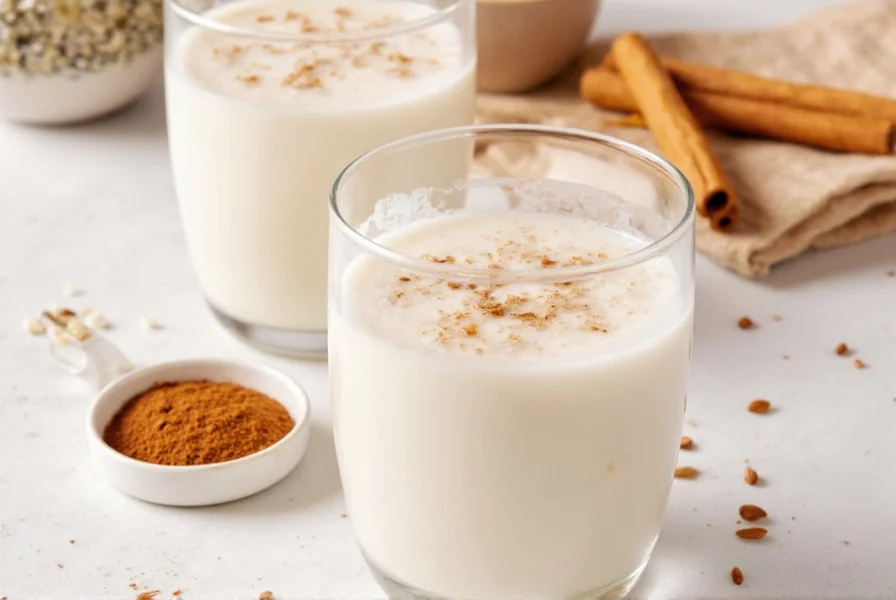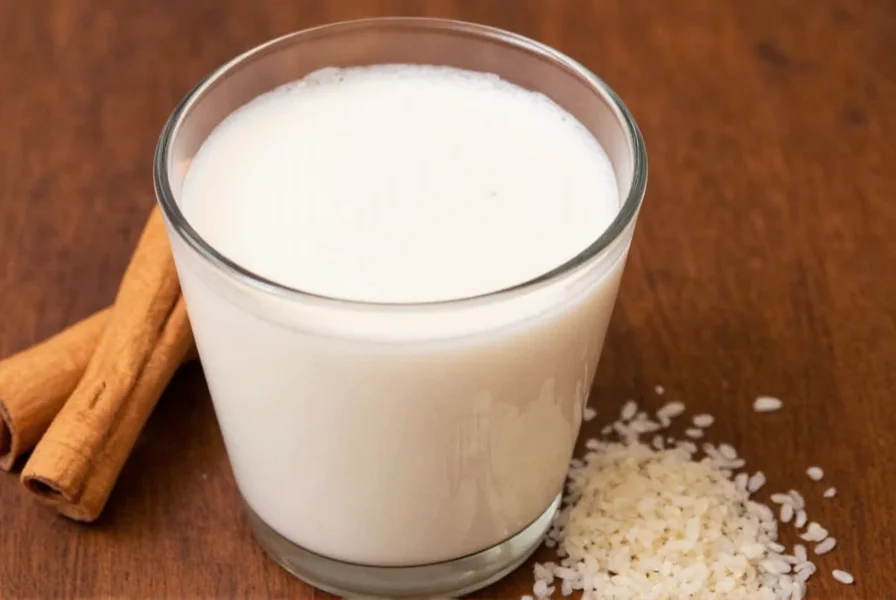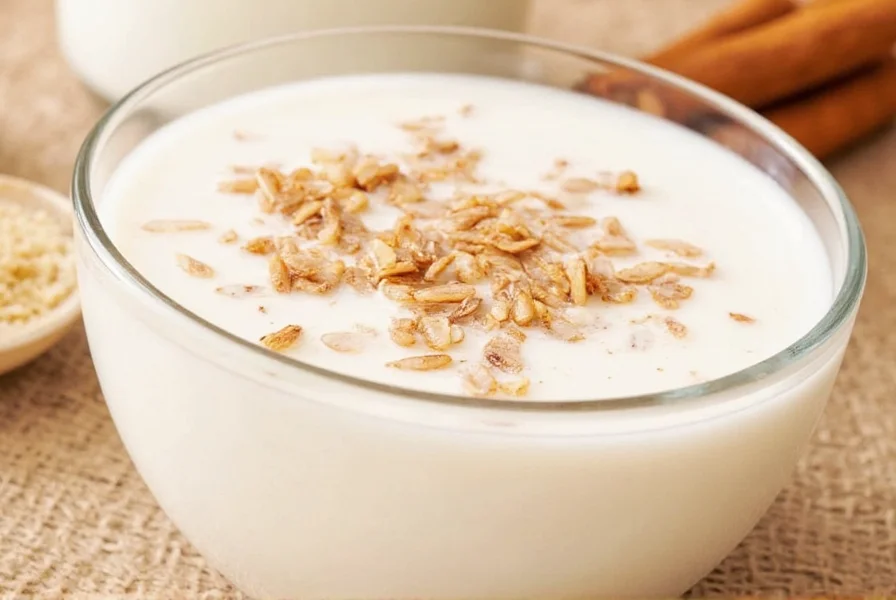When exploring rice milk and cinnamon, you're discovering one of the most versatile plant-based beverage combinations available. This dairy-free alternative has gained popularity among those with lactose intolerance, vegan diets, or anyone seeking a naturally sweet, comforting drink without artificial additives. The beauty of homemade rice milk with cinnamon lies in its simplicity—requiring just a few ingredients and minimal preparation time while delivering rich flavor and versatility.
The Perfect Pairing: Why Rice Milk and Cinnamon Work So Well
Rice milk's naturally mild sweetness complements cinnamon's warm, complex spice profile beautifully. Unlike some plant milks that require added sweeteners, rice milk contains natural sugars that harmonize with cinnamon without needing extra sugar. This makes rice milk cinnamon recipe options particularly appealing for those monitoring their sugar intake while still enjoying flavorful beverages.
When preparing how to make rice milk with cinnamon at home, the rice's starch content creates a naturally creamy texture that carries cinnamon's essential oils effectively. The result is a beverage with balanced flavor that works equally well hot or cold, in cooking applications, or as a standalone drink.
Nutritional Profile of Rice Milk with Cinnamon
Understanding the nutritional aspects helps incorporate this combination wisely into your diet. The table below shows typical values per 8-ounce serving:
| Nutrient | Rice Milk (unsweetened) | With 1 tsp Cinnamon |
|---|---|---|
| Calories | 70-90 | 75-95 |
| Carbohydrates | 15-20g | 16-21g |
| Sugars | 5-7g (natural) | 5-7g (natural) |
| Fat | 2-3g | 2-3g |
| Calcium | 20-30% DV (fortified) | 20-30% DV (fortified) |
| Manganese | Trace | 68% DV |
It's important to note that most commercial rice milks are fortified with calcium and vitamins, making them nutritionally comparable to dairy milk in certain aspects. The addition of cinnamon contributes significant manganese and antioxidants without adding calories or sugar. For those following a dairy-free rice milk cinnamon beverage lifestyle, this combination provides valuable nutrients while avoiding common allergens.

Creating Perfect Rice Milk with Cinnamon: A Simple Recipe
Mastering homemade rice milk with cinnamon instructions takes just minutes with basic kitchen equipment. Here's a reliable method that produces consistently smooth results:
Basic Rice Milk with Cinnamon Recipe
Ingredients:
- 1 cup white rice (short or medium grain)
- 4 cups filtered water
- 1-2 cinnamon sticks or 1 tsp ground cinnamon
- Optional: 1-2 pitted dates or small banana for natural sweetness
- Pinch of sea salt
Instructions:
- Rinse rice thoroughly until water runs clear
- Soak rice in 2 cups water for 30-60 minutes (optional but improves texture)
- Add soaked rice, remaining 2 cups water, cinnamon, and optional sweetener to blender
- Blend on high for 1-2 minutes until completely smooth
- Strain through nut milk bag or fine mesh sieve
- Store in sealed container in refrigerator for up to 4 days
For the best rice milk cinnamon recipe for breakfast, consider these professional tips:
- Use a high-speed blender for the smoothest texture
- Add cinnamon sticks during soaking for more subtle flavor, or ground cinnamon after blending for stronger spice notes
- Shake well before each use as separation is natural
- For creamier texture, reduce water to 3.5 cups
Versatile Uses Beyond Drinking
The applications for rice milk and cinnamon extend far beyond a simple beverage. This combination shines in various culinary contexts:
- Oatmeal and cereal: Creates a naturally sweet base that enhances grains
- Smoothies: Adds creaminess without overpowering other flavors
- Baking: Perfect substitute in cakes, muffins, and pancakes
- Coffee and tea: Makes an excellent dairy-free creamer alternative
- Dessert sauces: Reduces to create a cinnamon-infused syrup
- Curries and soups: Adds subtle sweetness to savory dishes
For those establishing a rice milk and cinnamon for morning routine, try warming the beverage with a touch of vanilla for a comforting start to your day. The natural sweetness means you can often skip additional sweeteners, making it an excellent choice for balanced morning nutrition.

Storage and Freshness Tips
Proper storage ensures your rice milk with cinnamon maintains optimal flavor and safety:
- Always store in airtight glass container in the refrigerator
- Consume within 3-4 days for best quality (commercial versions last longer due to preservatives)
- Separation is normal—simply shake before use
- Freeze in ice cube trays for longer storage (up to 2 months)
- Do not leave at room temperature for more than 2 hours
When making larger batches of rice milk cinnamon recipe, consider preparing the base rice milk without cinnamon, then adding fresh cinnamon when serving. This prevents the spice flavor from intensifying too much during storage.
Addressing Common Questions
Many people exploring rice milk and cinnamon have similar questions about preparation, uses, and benefits. Understanding these aspects helps maximize enjoyment of this versatile combination while making informed choices for your dietary preferences and needs.
Frequently Asked Questions
Can I use brown rice instead of white rice for rice milk with cinnamon?
Yes, brown rice works for rice milk with cinnamon, though it produces a slightly grainier texture and nuttier flavor. You'll need to blend longer and may want to use a finer strainer. Brown rice also contains more fiber but requires longer soaking (at least 2 hours) to achieve optimal smoothness.
How does rice milk with cinnamon compare nutritionally to other plant milks?
Rice milk with cinnamon is naturally higher in carbohydrates but lower in protein than soy or pea milk. It's typically lower in fat than coconut milk and lacks the omega-3s found in flax milk. The main advantage is its hypoallergenic nature—it's free from common allergens like nuts, soy, and gluten (when using certified gluten-free rice).
Why does my homemade rice milk separate quickly?
Separation in rice milk with cinnamon is natural since it lacks emulsifiers found in commercial versions. To minimize separation, try adding a small pinch of xanthan gum (1/16 tsp) when blending, or ensure you're using enough rice to water ratio (1:4 is standard). Shaking before each use solves this harmless issue.
Can I make rice milk with cinnamon without a blender?
Traditional rice milk requires blending for proper texture, but you can create a simpler version by simmering rice with water and cinnamon for 20-30 minutes, then straining. The result will be less creamy and more like rice water with cinnamon flavor, but it works in a pinch when equipment isn't available.











 浙公网安备
33010002000092号
浙公网安备
33010002000092号 浙B2-20120091-4
浙B2-20120091-4